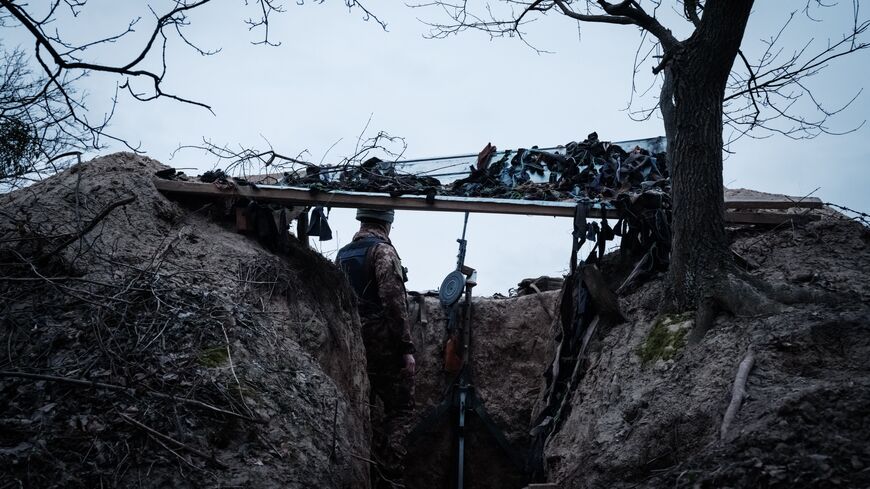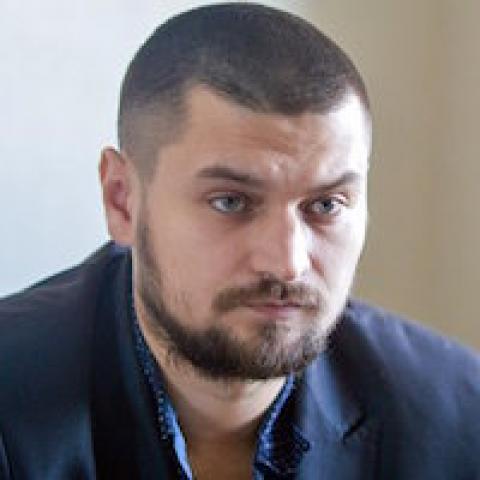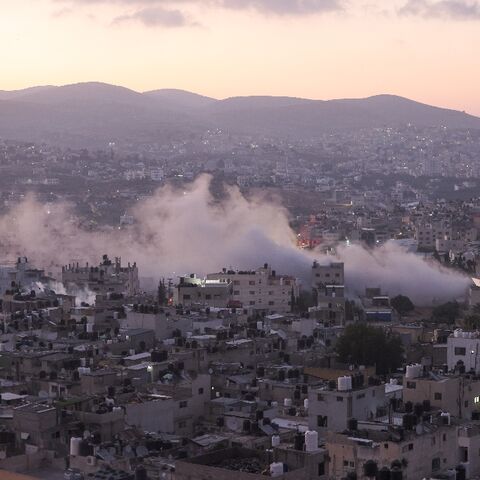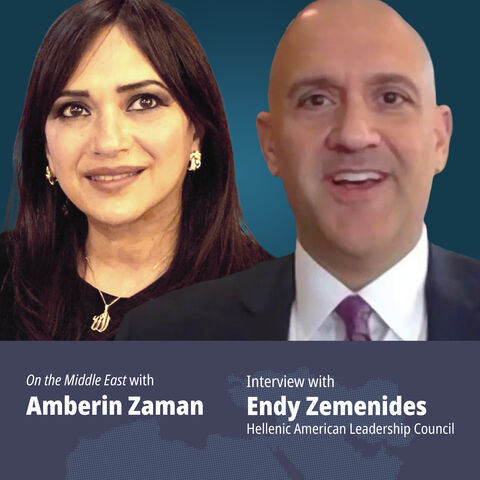The recent Russia-Iran tension after Tehran summoned Russian ambassador over Moscow's comment on the disputed islands with the UAE, and the intelligence sharing blunder in Syria, has once again highlighted the limits of trust in bilateral relations.
This did not come as a surprise to experts, although there was much talk after Russia invaded Ukraine about the changing nature of the tactical alliance between Moscow and Tehran, which appears to have been deliberately fueled by both sides for propaganda purposes.
The main indicator that made talk about a sharp rapprochement between the two sides plausible was military cooperation, namely, massive deliveries of Shahed-131/136 kamikaze drones to Russian troops, operational training of Russian units by Iranian instructors in tactics of their use and even localization of production of unmanned aerial vehicles (UAVs) on the territory of Russian Tatarstan.
To what extent is the factor of the drones really cementing the Russian-Iranian relationship?
Drone franchise
A spokesperson for Ukraine's Southern Command, Natalia Humeniuk, said July 26 that Russian troops had begun using Iranian-made Shahed kamikaze drones assembled in Russia. "The fact that the wreckage of these Shaheds found after the recent attacks had Cyrillic markings indicates that their production is already Russian," Humeniuk said. The updated UAVs, as far as can be judged from the photo, have some design differences and are also equipped with warheads reinforced with strike elements and jam-resistant Kometa-M receivers to protect against the effects of electronic warfare jamming.
However, the localization of Iran's drone production has only been achieved in part. The drones are being assembled from components supplied by Iran in the Alabuga Special Economic Zone in Tatarstan. But the local authorities plan to replace a significant part of the components, train personnel and organize the technological process largely on their own within two to three years. Since the Russian leadership does not officially recognize the purchase of Iranian UAVs, internal documents refer to the drones as "boats" and to Iran as "Belarus."
Nevertheless, this conspiracy is already conditional, since recently even the official journal of the Russian Ministry of Defense recognized that the Iranian Shahed-131/136 loitering munition and repainted products Geran-1 and Geran-2 are one and the same.
The franchised assembly of drones on Russian territory helps Iran to officially deny the facts of new deliveries of ready-made kamikaze drones and allows the Russian side to build up a stockpile for freer planning of certain operations. For example, in April, the Ukrainian side claimed another pause in the use of Iranian drones by the Russian military, which was caused by waiting for the delivery of a new batch from Iran. But in May, with the Tatarstan assembly process more or less fine-tuned, the Russian army set a record for the number of Shahed drones fired into Ukraine. At that time, Ukrainian President Volodymyr Zelenskyy announced an increase in the frequency of "combined attacks" by Shahed UAVs and cruise missiles.
Impact on the conflict
Plans to expand the scale of drone production only in two to three years' time can hardly be taken as evidence that Moscow is clearly planning to fight indefinitely and is not considering the scenario of a conflict freeze or long-term cease-fire. According to an investigation by Russian journalists at Protokol, the Special Economic Zone administration agreed to the project for the production of Shahed UAVs, albeit unwillingly, in order to compensate for losses caused by the international sanctions on Iran and to avoid the need to mobilize some of the employees of the companies located there, by becoming a defense contractor.
Al-Monitor wrote extensively in the autumn of 2022 that in a high-intensity conflict, Shahed drones are a cheap alternative to precision weapons for strikes against fixed targets that do not require additional reconnaissance. Since then, Russian forces have expanded their tactical use, but not because the Russian army has overcome a lack of surveillance and target acquisition.
As Russian military expert Yuri Lyamin noted in TRT, the operational build-up of Iranian drone production at the expense of new facilities in Russia is linked to the activity of Ukraine's air defenses: Russia's military is counting on the continued use of Shaheds to save on expensive cruise missiles and to oversaturate the various air defenses supplied to Ukraine.
The Shaheds are also often used as decoys to identify air defense emplacements, assess their operational algorithms, and then attack them with lighter and more expensive Russian-made Lancet kamikaze drones.
At the same time, it is not easy to get the Ukrainian air defense forces to use modern, expensive anti-missile systems, even in combined attacks, when cruise missiles attack targets after Shahed drones. For example, Russian activity at bomber airfields and in areas where missile ships are in service is constantly under surveillance by NATO's constellation of satellites. Therefore, Shahed's participation in land-, air- and sea-based cruise missile strikes is intentionally not constant, so that a massive kamikaze drone raid is not perceived as a precursor to missile strikes.
All in all, unlike Iran's supply of ammunition and a number of other military cargoes in relatively small quantities, the purchase of Shahed UAVs and learning tactical techniques for their use had an impact on the Ukrainian war. Of course, it did not change the course of the conflict, but it did allow Moscow to have a relatively cheap alternative to precision weapons and to buy time to increase the production of missiles of various classes.
Drones and diplomacy
The dynamics of military-technical cooperation between Russia and Iran may differ from the situation in the sphere of diplomacy, political analyst Igor Subbotin, a columnist for the Russian daily Nezavisimaya Gazeta, said. "The example of the S-300 contract is illustrative when the Iranian side openly complained about delays and even sent a complaint to the International Court of Arbitration, but this situation did not in any way diminish Tehran's interest in political interaction with the Russian authorities afterward," he told Al-Monitor.
Nevertheless, Tehran's decision to continue supplying drones to Russia and to localize their production against the backdrop of serious pressure from Europe and the United States has certainly had an impact on the overall configuration of Russian-Iranian relations. For the first time, the Russian military found itself acting as cadets rather than instructors, and the Kremlin as a debtor.
As Nikolay Kozhanov, research associate professor at the Gulf Studies Center of Qatar University who served as a diplomat at the Russian Embassy in Tehran, noted in a conversation with Al-Monitor, from Tehran's point of view, the delivery of the kamikaze drones and the start of their assembly on Russian territory under a franchise "gave Iran the right to talk to Moscow on an equal footing." Therefore, after the statement following the Russia-Gulf Cooperation Countires (GCC) summit, in which Russia took the side of the United Arab Emirates (UAE) in the territorial dispute between Tehran and Abu Dhabi, Iranian diplomacy made it clear that it would no longer tolerate such actions and demanded compensation for the damage done to bilateral relations.
However, Kozhanov does not expect that this episode is going to affect Russian-Iranian cooperation. "The parties remain interdependent on a number of economic and political issues. And, for example, with the further strengthening of Iran's nuclear potential, Iran has an understanding that Russia will support it on various platforms, primarily at UN Security Council meetings," Kozhanov said. At the same time, he does not rule out that "if the irritants in the bilateral relationship continue to accumulate, at some point they may reach a critical mass."








